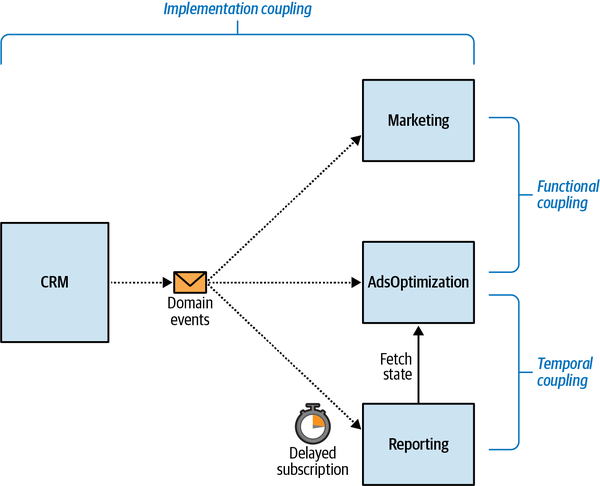Changes in one component implementation leads to changes in other components, otherwise it may lead to errors or inconsistent state in the dependent components.
Examples
CRM

The CRM bounded context is implemented as an event-sourced domain model. When the CRM system had to be integrated with the Marketing bounded context, the teams decided to leverage the event-sourced data model’s flexibility and let the consumer—in this case, Marketing—subscribe to the CRM’s domain events and use them to project the model that fits their needs.
When the AdsOptimization bounded context was introduced, it also had to process the information produced by the CRM bounded context. Again, the teams decided to let AdsOptimization subscribe to all domain events produced in the CRM and project the model that fits AdsOptimization’s needs.
The Marketing and AdsOptimization bounded contexts are subscribed to all the domain events generated by the CRM’s event-sourced model. Consequently, a change in the CRM’s implementation, such as adding a new domain event or changing the schema of an existing one, has to be reflected in both subscribing bounded contexts! Failing to do so can lead to inconsistent data. For example, if an event’s schema changes, the subscribers’ projection logic will fail. On the other hand, if a new domain event is added to the CRM’s model, it can potentially affect the projected models, and thus, ignoring it will lead to projecting an inconsistent state.
Learning Domain-Driven Design, Vlad Khononov